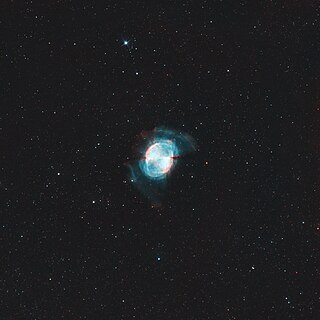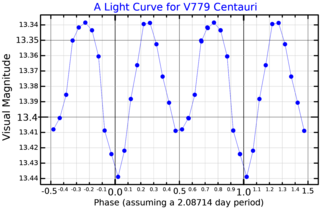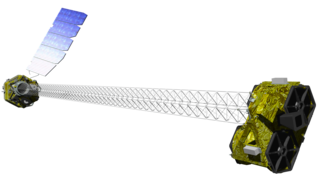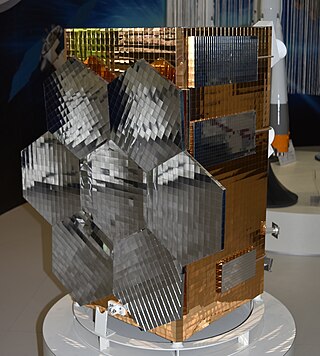
The George C. Marshall Space Flight Center (MSFC), located in Redstone Arsenal, Alabama, is the U.S. government's civilian rocketry and spacecraft propulsion research center. As the largest NASA center, MSFC's first mission was developing the Saturn launch vehicles for the Apollo program. Marshall has been the lead center for the Space Shuttle main propulsion and external tank; payloads and related crew training; International Space Station (ISS) design and assembly; computers, networks, and information management; and the Space Launch System. Located on the Redstone Arsenal near Huntsville, MSFC is named in honor of General of the Army George C. Marshall.

The Chandra X-ray Observatory (CXO), previously known as the Advanced X-ray Astrophysics Facility (AXAF), is a Flagship-class space telescope launched aboard the Space ShuttleColumbia during STS-93 by NASA on July 23, 1999. Chandra is sensitive to X-ray sources 100 times fainter than any previous X-ray telescope, enabled by the high angular resolution of its mirrors. Since the Earth's atmosphere absorbs the vast majority of X-rays, they are not detectable from Earth-based telescopes; therefore space-based telescopes are required to make these observations. Chandra is an Earth satellite in a 64-hour orbit, and its mission is ongoing as of 2023.

XMM-Newton, also known as the High Throughput X-ray Spectroscopy Mission and the X-ray Multi-Mirror Mission, is an X-ray space observatory launched by the European Space Agency in December 1999 on an Ariane 5 rocket. It is the second cornerstone mission of ESA's Horizon 2000 programme. Named after physicist and astronomer Sir Isaac Newton, the spacecraft is tasked with investigating interstellar X-ray sources, performing narrow- and broad-range spectroscopy, and performing the first simultaneous imaging of objects in both X-ray and optical wavelengths.

The Dumbbell Nebula is a planetary nebula in the constellation Vulpecula, at a distance of about 1360 light-years. It was the first such nebula to be discovered, by Charles Messier in 1764. At its brightness of visual magnitude 7.5 and diameter of about 8 arcminutes, it is easily visible in binoculars and is a popular observing target in amateur telescopes.

The Compton Gamma Ray Observatory (CGRO) was a space observatory detecting photons with energies from 20 keV to 30 GeV, in Earth orbit from 1991 to 2000. The observatory featured four main telescopes in one spacecraft, covering X-rays and gamma rays, including various specialized sub-instruments and detectors. Following 14 years of effort, the observatory was launched from Space Shuttle Atlantis during STS-37 on April 5, 1991, and operated until its deorbit on June 4, 2000. It was deployed in low Earth orbit at 450 km (280 mi) to avoid the Van Allen radiation belt. It was the heaviest astrophysical payload ever flown at that time at 16,300 kilograms (35,900 lb).
The Extreme Universe Space Observatory onboard Japanese Experiment Module (JEM-EUSO) is the first space mission concept devoted to the investigation of cosmic rays and neutrinos of extreme energy (E > 5×1019 eV). Using the Earth's atmosphere as a giant detector, the detection is performed by looking at the streak of fluorescence produced when such a particle interacts with the Earth's atmosphere.

Centaurus X-3 is an X-ray pulsar with a period of 4.84 seconds. It was the first X-ray pulsar to be discovered, and the third X-ray source to be discovered in the constellation Centaurus. The system consists of a neutron star orbiting a massive, O-type supergiant star dubbed Krzeminski's star after its discoverer, Wojciech Krzemiński. Matter is being accreted from the star onto the neutron star, resulting in X-ray emission.

NuSTAR is a NASA space-based X-ray telescope that uses a conical approximation to a Wolter telescope to focus high energy X-rays from astrophysical sources, especially for nuclear spectroscopy, and operates in the range of 3 to 79 keV.

A telescope is a device used to observe distant objects by their emission, absorption, or reflection of electromagnetic radiation. Originally it was an optical instrument using lenses, curved mirrors, or a combination of both to observe distant objects – an optical telescope. Nowadays, the word "telescope" is defined as wide range of instruments capable of detecting different regions of the electromagnetic spectrum, and in some cases other types of detectors.

The International Astrophysical Observatory "GRANAT", was a Soviet space observatory developed in collaboration with France, Denmark and Bulgaria. It was launched on 1 December 1989 aboard a Proton rocket and placed in a highly eccentric four-day orbit, of which three were devoted to observations. It operated for almost nine years.

A Wolter telescope is a telescope for X-rays that only uses grazing incidence optics – mirrors that reflect X-rays at very shallow angles.

An X-ray astronomy satellite studies X-ray emissions from celestial objects, as part of a branch of space science known as X-ray astronomy. Satellites are needed because X-radiation is absorbed by the Earth's atmosphere, so instruments to detect X-rays must be taken to high altitude by balloons, sounding rockets, and satellites.

NEVOD is a neutrino detector and cosmic ray experiment that attempts to detect Cherenkov radiation arising from interactions between water and charged particles. It represents the first attempt to perform such measurements at the Earth's surface; it is because of this surface deployment that the experiment is also able to investigate cosmic rays. NEVOD is situated at the Moscow Engineering Physics Institute (MEPhI).

Spektr-RG is a Russian–German high-energy astrophysics space observatory which was launched on 13 July 2019. It follows on from the Spektr-R satellite telescope launched in 2011.

The Focusing Optics X-ray Solar Imager, or FOXSI, is a sounding rocket payload built by UC Berkeley and led by Säm Krucker to test high energy grazing-incidence focusing optics paired with solid-state pixelated detectors to observe the Sun. FOXSI is composed of seven identical Wolter-I telescope modules, as well as Silicon and Cadmium Telluride strip detectors originally developed for the HXT telescope on the Japanese Hitomi mission. The FOXSI payload flew two times, most recently in 2014 and previously in 2012. Like most sounding rockets, FOXSI flew for approximately 15 minutes per mission and observed the Sun for about 5 minutes while in space. During its first flight, FOXSI successfully imaged a solar microflare in the hard x-ray band for the first time.

Mikhailo Lomonosov is an astronomical satellite operated by Moscow State University (MSU) named after Mikhail Lomonosov.

eROSITA is an X-ray instrument built by the Max Planck Institute for Extraterrestrial Physics (MPE) in Germany. It is part of the Russian–German Spektr-RG space observatory, which also carries the Russian telescope ART-XC. It was launched by Roscosmos on 13 July 2019 from Baikonur, and deployed in a 6-month halo orbit around the second Lagrange point (L2). It began collecting data in October 2019. Due to the breakdown of institutional cooperation between Germany and Russia after the invasion of Ukraine, the instrument stopped collecting data on February 26, 2022.

The Lynx X-ray Observatory (Lynx) is a NASA-funded Large Mission Concept Study commissioned as part of the National Academy of Sciences 2020 Astronomy and Astrophysics Decadal Survey. The concept study phase is complete as of August 2019, and the Lynx final report has been submitted to the Decadal Survey for prioritization. If launched, Lynx would be the most powerful X-ray astronomy observatory constructed to date, enabling order-of-magnitude advances in capability over the current Chandra X-ray Observatory and XMM-Newton space telescopes.

Imaging X-ray Polarimetry Explorer, commonly known as IXPE or SMEX-14, is a space observatory with three identical telescopes designed to measure the polarization of cosmic X-rays of black holes, neutron stars, and pulsars. The observatory, which was launched on 9 December 2021, is an international collaboration between NASA and the Italian Space Agency (ASI). It is part of NASA's Explorers program, which designs low-cost spacecraft to study heliophysics and astrophysics.

GRB 221009A also known as Swift J1913.1+1946 was an unusually bright and long-lasting gamma-ray burst (GRB) jointly discovered by the Neil Gehrels Swift Observatory and the Fermi Gamma-ray Space Telescope on October 9, 2022. The gamma-ray burst was around seven minutes long, but was detectable for more than ten hours following initial detection, and for several hours was bright enough in visible frequencies to be observable by amateur astronomers. Despite being over 2 billion light-years away, it was powerful enough to affect Earth's atmosphere, having the strongest effect ever recorded by a gamma-ray burst on the planet. The peak luminosity of GRB 221009A was measured by Konus-Wind to be ∼ 2.1 × 1047 J/s and by Fermi-GBM to be ∼ 1.0 × 1047 J/s over the 1.024s interval. A burst as energetic and as close to Earth as 221009A is thought to be a once-in-10,000-year event. It was the brightest and most energetic gamma-ray burst ever recorded, being deemed the "BOAT", or brightest of all time.


















